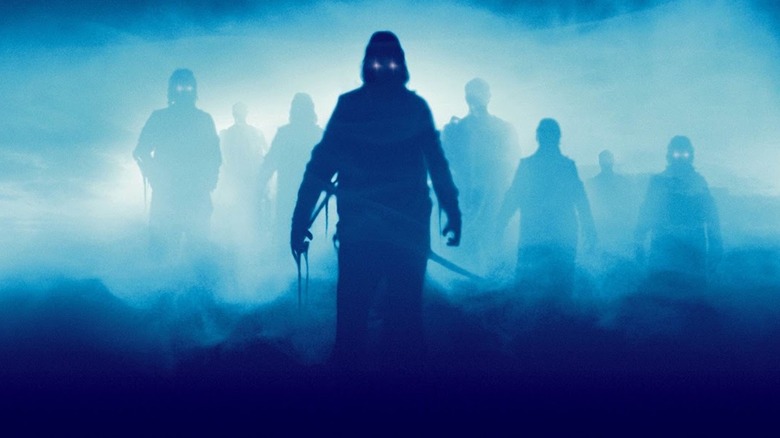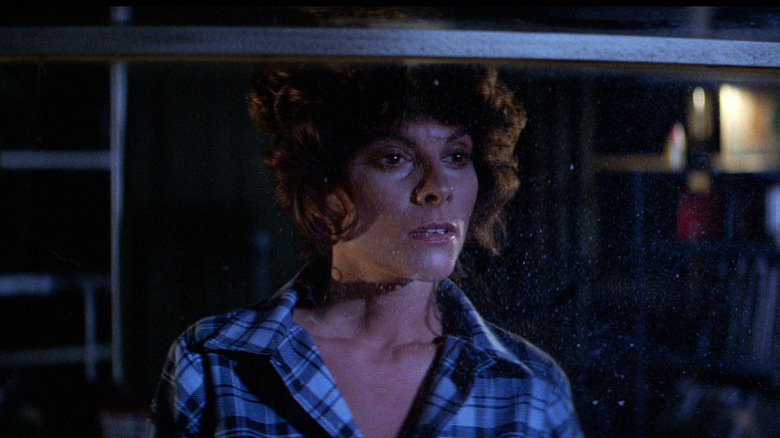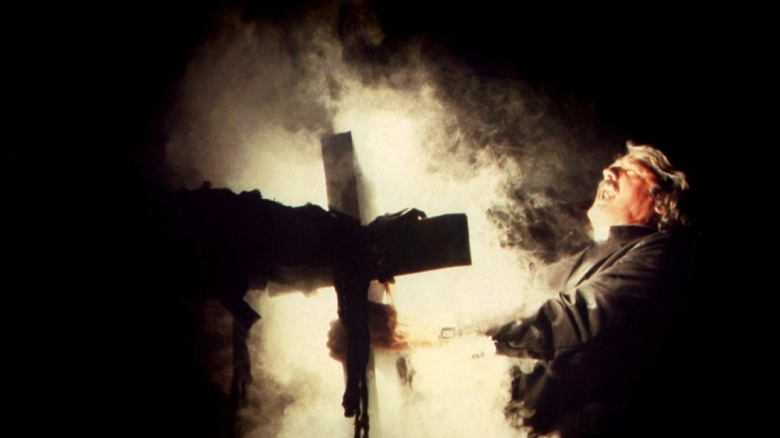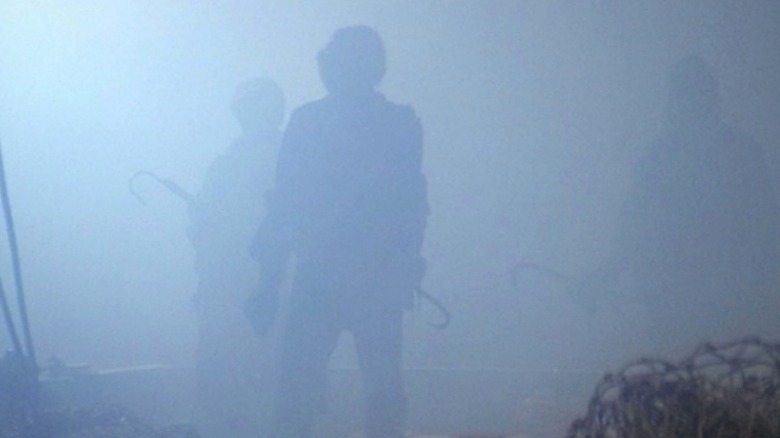How A Trip To Stonehenge Sparked The Idea For John Carpenter's The Fog
Britain is a pretty spooky place. Not only is it one of the most densely haunted countries in the world, but each region is also thick with its own myths and legends. There is nothing quite as eerie as the English countryside, something I feel so nostalgic for now that I live abroad. I especially miss the lonely lanes, empty fields, and deserted beaches of my home county Suffolk, which also inspired some of the most famous ghost stories of M.R. James.
Suffolk was witchcraft country back in the day and the wicked Witchfinder General, Matthew Hopkins, plied his trade there. A merman was once caught in the waters near Orford and was held for interrogation at the castle, while up the coast in Blythburgh, the demon dog Black Shuck burst into the church and frazzled a few of the congregation with his fiery breath.
My favorite tale when I was a kid was the fate of Dunwich, once a bustling port before the sea swept it away along with its many churches, leaving little more than a pub and a chip shop there today. The legend goes that if you stand on the cliff tops on a stormy night, you can still hear the church bells tolling beneath the waves.
I'm a complete sucker for that kind of stuff, which is probably why I love John Carpenter's "The Fog" so much. After the massive success of his slasher classic "Halloween," the director wanted to make a good old-fashioned ghost story instead. For inspiration, he combined an old seafaring legend from the United States with a creepy idea he had while visiting one of the UK's most famous and enigmatic landmarks, Stonehenge.
So what happens in The Fog again?
Just before midnight on the centenary of Antonio Bay, an old salt (John Houseman) sits telling spooky stories to a bunch of kids on the beach. He wraps up with the tale of the Elizabeth Dane, a ship that ran aground in the fog when the captain steered a course toward a campfire on the shore, resulting in the death of the entire crew. Fishermen believe that when the fog returns to the town, the drowned men will rise and seek their revenge
Over in the local church, Father Malone (Hal Holbrook) discovers his grandfather's diary, which reveals that, 100 years ago, six founders of the town deliberately lured a leprosy-infected ship onto the rocks and stole all the gold on board. That ship was the Elizabeth Dane.
The legend of vengeful seafarers turns out to be true. A thick fog bank rolls in from the ocean, bringing with it a crew of waterlogged zombies intent on taking six lives in place of the six original conspirators who sank their ship. Late-night DJ Stevie Wayne (Adrienne Barbeau) tries to keep the town abreast of the deadly situation from her lighthouse studio.
"The Fog" has its fair share of shocks and kills, but it works best when it emulates the cozy chills of an old-school ghost story. Carpenter's sparse score helps get the nerves jangling and Dean Cundey's excellent cinematography keeps us searching the corners of the frame for the next sign of supernatural danger. If I have one major criticism, it's that the cast (apart from Barbeau) doesn't really have much to do. Jamie Lee Curtis, Janet Leigh, and Tom Atkins all show up, but find themselves twiddling their thumbs while the ghostly sailors get busy hacking and slashing.
A trip to Stonehenge gave Carpenter the idea
Spinal Tap kind of ruined Stonehenge for me, but there is no denying it's an atmospheric place. You can't wander around the ancient stones anymore without booking a special tour or joining around 20,000 other people celebrating the summer solstice, but just driving past it on the A303 is enough to send a tingle down the spine.
It must have been very different when John Carpenter visited the site in 1977 with producer Debra Hill. The director said on the DVD commentary for "The Fog":
"We went to see Stonehenge and I recall... I kind of came up with the idea of having something come out of the fog. It was a very, very thin idea at the time but we developed it into the screenplay."
Debra Hill added:
"I can remember that fog bank when we were in England. It was just sort of sitting on the horizon way past Stonehenge, and you said at the time 'What if there's something in that fog? Wouldn't that be scary?' And that's how it sort of evolved."
As the screenplay developed, they added a nefarious conspiracy that Carpenter claims was inspired by a true event:
"The original idea is based on something in reality that happened in California history. It was off the coast of Santa Barbara when a ship was sunk carrying lots of gold and it was pirated and so forth and we just added the ghostly aspect."
The stretch of coast Carpenter is referring to saw its fair share of ships running aground in the 19th century, and a map from the time even marks a shipwreck. However, there is little to suggest that foul play caused the disasters.
Did wreckers really lure ships to their doom?
The idea of unscrupulous wreckers using fake lights to lure ships onto the rocks is a popular one, although it is doubtful that it happened on a regular basis in real life. One of the most enduring legends involving this kind of skulduggery concerns Nag's Head in North Carolina, which reputedly got its name from the practice of tying a lantern to a donkey's neck on the beach to trick captains into thinking other ships were safely at anchor, and running aground on the shoals.
Ships didn't always need help dashing themselves against treacherous coastlines, and the wrecking business was a profitable one for centuries (via The Pirate Empire). Ancient laws stated that salvageable goods must be offered to any survivors, but an unintended consequence was that villainous wreckers sometimes finished off any survivors to make sure there were no claims to the booty.
The task of boarding unstable wrecks, which might be perched on dangerous rocks and about to sink any moment in heavy weather, was extremely dangerous in itself. However, wreckers took the risk for the prospect of recovering valuable cargo they could re-sell, or strike gold by looting the ship's strongbox. Even the timbers of the ship itself were sometimes stolen and re-purposed for ad-hoc home improvements in coastal communities.
Weaving this kind of yarn into the backstory of "The Fog" gives it the real feel of a traditional old folk tale. From the megaliths of Salisbury Plain to the shipwrecks of the Californian coast, John Carpenter and Debra Hill wisely used these inspirations to create one of the creepiest cinematic ghost stories.



